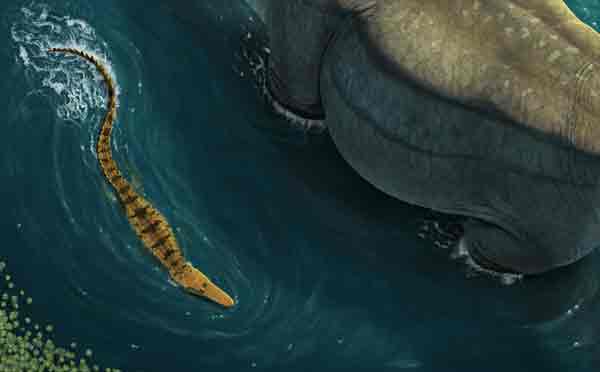Isisfordia molnari – A New Species of Australian Crocodile from the Cretaceous
Researchers from the University of New England (New South Wales), Queensland University and the Australian Opal Centre have described a new species of prehistoric crocodile. The Cretaceous-aged croc has been named Isisfordia molnari, it is the second species described within the Isisfordia genus, both are known from Australia, although I. duncani, which was named in 2006, heralds from the Winton Formation of Queensland, whilst the new species I. molnari, comes from the geologically younger Griman Creek Formation of New South Wales.
Isisfordia molnari
A Life Reconstruction of the Newly Described Prehistoric Crocodile Isisfordia molnari
Picture credit: José Vitor Silva
Honouring Ralph Molnar
The trivial name honours vertebrate palaeontologist Ralph Molnar, in recognition of his contribution to the research on crocodylomorphs from Gondwana. Molnar was one of the researchers responsible for the naming of Isisfordia duncani back in 2006.
The new species has been erected based on a partial braincase and a fragment of jawbone (maxilla). Both fossils have been opalised and come from the Lightning Ridge area, but their exact provenance remains uncertain. The fossil jaw fragment had previously been designated as the holotype of Crocodylus (Bottosaurus) selaslophensis, but has, following a review, been assigned to this new species. This piece of jawbone complete with six teeth in situ had been donated to the Australian Museum in 1914. The partial braincase is probably a much more recent find, it was purchased by the Australian Museum in the early part of this century.
Photographs and Line Drawings of the Braincase of Isisfordia molnari

Picture credit: PeerJ
The Fragment of Upper Jawbone Assigned to the Newly Erected Species (I. molnari)

Picture credit: PeerJ
The scientific paper: “Isisfordia molnari sp. nov., a new basal eusuchian from the mid-Cretaceous of Lightning Ridge, Australia” by Lachlan J. Hart, Phil R. Bell, Elizabeth T. Smith and Steven W. Salisbury published in PeerJ.
The Everything Dinosaur website: Everything Dinosaur.







Leave A Comment